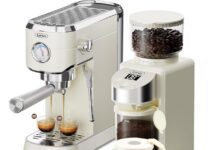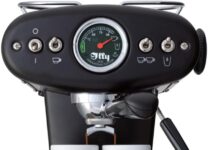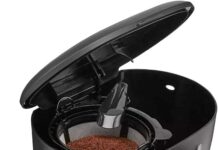If you’re tired of sipping on bitter Bialetti coffee, fret not, because we have some handy tips up our sleeves that can help you transform your morning brew into a smoother, more enjoyable concoction. Whether you’re a seasoned coffee snob or just starting your love affair with Italian coffee, we’ve got you covered. So grab your trusty Bialetti, dust off those coffee beans, and get ready to elevate your coffee game to the next level!
Choosing the Right Coffee Beans
When it comes to brewing a great cup of coffee, choosing the right coffee beans is crucial. One of the factors to consider is the roast level. The roast level determines the flavor profile and intensity of the coffee. If you prefer a lighter and more acidic taste, go for a light roast. On the other hand, if you prefer a rich and bold flavor, a dark roast would be ideal. Experiment with different roast levels to find the one that suits your taste preferences.
In addition to the roast level, it is important to opt for high-quality Arabica beans. Arabica beans are known for their superior flavor and aroma compared to their counterpart, Robusta beans. While Robusta beans are often used in commercial blends for their high caffeine content, Arabica beans offer a more nuanced and enjoyable experience. Look for coffee beans that are 100% Arabica to ensure a high-quality brew.
Lastly, don’t be afraid to try different blends of coffee beans. Blends can offer a unique and complex flavor profile that you may not find in single-origin coffees. Some blends may combine beans from different regions or roasts to create a well-balanced cup of coffee. Be open to exploring different blends and find the one that resonates with your taste buds.
Grinding the Coffee Beans
Once you’ve chosen the right coffee beans, it’s time to grind them. Investing in a good grinder is essential for achieving a consistent grind size. A burr grinder is recommended as it allows for precise control over the grind, resulting in a more flavorful brew. Blade grinders, on the other hand, can lead to an uneven grind size, which in turn affects the extraction process.
Choosing the right grind size is crucial in optimizing the flavor extraction. Different brewing methods require different grind sizes. For a Moka pot, a medium-fine grind is generally recommended. This allows for a balanced extraction without over-extracting or under-extracting the coffee. Experiment with different grind sizes to find the one that works best for your Moka pot and personal taste preferences.
It’s important to grind the coffee just before brewing to maximize the freshness and flavor. Coffee grounds start to lose their aroma and flavor shortly after being exposed to air. Grinding the beans right before brewing ensures that you capture all the flavorful oils and compounds in the coffee. Invest in a grinder with an on-demand feature or simply grind your beans right before brewing for the best results.
Water Temperature and Quality
Water plays a crucial role in the brewing process and can significantly impact the taste of your coffee. Using filtered water is highly recommended as it helps remove any impurities that may affect the flavor. Tap water, especially in areas with hard water, can contain minerals and chemicals that may alter the taste of the coffee. Using filtered water ensures a clean and pure base for your brew.
The water temperature is another important factor to consider. The ideal temperature for brewing coffee in a Moka pot is between 195°F and 205°F (90°C – 96°C). This range allows for optimal extraction of the coffee flavors without scorching or under-extracting the grounds. Use a thermometer to measure the water temperature accurately and adjust accordingly to achieve the best results.
When heating the water, it is important to avoid boiling it. Boiling water can lead to over-extraction and bitter flavors in your coffee. If the water reaches boiling point, allow it to cool for a few moments before pouring it into the Moka pot. This slight drop in temperature can make a noticeable difference in the taste of your brew.
Ratio of Coffee to Water
Finding the right ratio of coffee to water is crucial in achieving your preferred coffee strength. The general guideline for a Moka pot is using a ratio of 1:15 – 1:17, meaning 1 gram of coffee to 15-17 grams of water. However, these ratios can be adjusted based on personal taste preferences. If you prefer a stronger cup, you can increase the amount of coffee or decrease the amount of water.
Experimenting with different ratios allows you to fine-tune the flavor and strength of your brew. Keep track of the ratios you try and take note of the variations in taste. This way, you can gradually adapt the ratios until you find the perfect balance.
Brewing Time and Technique
To ensure a delicious and well-extracted coffee, pay attention to the brewing time and technique. Preheating the water before brewing is an important step as it helps maintain a consistent temperature during extraction. Heat your water in a separate kettle or pot and pour it directly into the Moka pot once it’s heated.
Controlling the brewing time is crucial in achieving the desired flavor and strength. Aim for a brewing time between 4 to 5 minutes, although it may vary depending on your specific Moka pot and heat source. If the brewing time is too short, the coffee may be under-extracted and weak. If the brewing time is too long, the coffee may be over-extracted and bitter. Adjust the heat source or grind size if needed to achieve the desired brewing time.
Using medium heat is recommended when brewing coffee in a Moka pot. This allows for a gradual extraction process and prevents the coffee from becoming scorched or bitter. Adjust the heat source accordingly to maintain a steady and consistent temperature during the brewing process. Avoid using high heat as it can lead to uneven extraction and a burnt taste.
Use a Clean and Preheated Moka Pot
To ensure the best results, it is important to keep your Moka pot clean. Regularly clean the pot with warm, soapy water, and remove any coffee residue or oils that may have built up over time. This helps maintain the optimal flavor and prevents any unpleasant tastes from transferring to your brew. Additionally, a clean Moka pot ensures a smooth brewing process and consistent extraction.
Before brewing, preheat the Moka pot to ensure a stable temperature throughout the brewing process. Preheating helps avoid any sudden temperature changes that may affect the extraction and flavor of the coffee. Simply fill the bottom chamber with hot water and let it sit for a few minutes before emptying it and adding fresh water for brewing. Preheating ensures a more consistent and flavorful cup of coffee.
Avoid Over-Extracting the Coffee
Over-extraction can lead to bitter and unpleasant flavors in your coffee. To prevent this, it is important to remove the Moka pot from heat promptly once the coffee starts to flow into the upper chamber. Leaving the pot on the heat for too long can result in over-extraction and compromise the taste of your brew. Pay close attention to the brewing process and remove the Moka pot as soon as the coffee starts to flow.
Once the coffee is brewed, transfer it to a thermos or insulated carafe to keep it warm. Leaving the coffee in the Moka pot, even off the heat, can cause it to continue extracting and potentially become bitter over time. By transferring the coffee to a thermos, you can maintain the desired flavor and enjoy a hot cup of coffee for a longer period.
Avoid Reheating the Coffee
Reheating coffee is not recommended as it can alter the taste and lead to a less enjoyable experience. Freshly brewed coffee has a vibrant and complex flavor profile that may diminish when reheated. If you find that you have brewed more coffee than you can consume at once, consider making smaller batches or investing in a smaller Moka pot to avoid wastage.
To maximize the enjoyment of your coffee, savor it while it’s freshly brewed. This way, you can fully appreciate the flavors and aromas that make each cup unique. If you need to keep your coffee warm for an extended period, transfer it to a thermos to maintain the temperature without compromising the taste.
Experiment with Brewing Variables
Brewing coffee is an art, and part of the fun is experimenting with different variables to achieve the perfect cup. Don’t be afraid to adjust the grind size to fine-tune the extraction process. Finer grinds generally result in a stronger cup of coffee, while coarser grinds tend to produce a milder brew. Play around with different grind sizes to find the one that suits your taste preferences.
Varying the water temperature can also have a significant impact on the flavor of your coffee. While the optimal temperature range for a Moka pot is between 195°F and 205°F (90°C – 96°C), slight variations can bring out different nuances in the coffee. Experiment with higher or lower temperatures to explore the range of flavors your beans can offer.
Lastly, try different coffee-to-water ratios to find your perfect strength. By adjusting the amount of coffee and water, you can create a brew that suits your taste preferences. Start with the general guidelines and gradually tweak the ratios until you achieve the desired flavor profile.
Consider Adding Milk or Sweeteners
To balance the bitterness of your coffee, consider adding milk or sweeteners. Milk can help mellow out the strong flavors and add a creamy texture to the brew. Experiment with different types of milk, such as whole milk or non-dairy alternatives, to find the one that complements your coffee best.
Sweeteners can also be used to mask the bitterness and enhance the overall taste of your coffee. Sugar or natural sweeteners like honey or maple syrup can add a touch of sweetness and balance the flavors. Start with a small amount and adjust to your taste preference.
Remember, coffee brewing is personal, and there are no strict rules. The most important thing is to enjoy the process and experiment with different techniques and ingredients to create the perfect cup of coffee that suits your taste buds. With these tips and tricks, you can make your Bialetti coffee less bitter and discover a whole new world of flavors. Happy brewing!





































